Following joint-hosting the Women’s World Cup in 2023, Australia will head to Paris this summer to see if they can improve on their fourth-place finish at the previous Olympics held in Tokyo.
The Matildas booked their place at their fifth Olympic games following a comprehensive 13-0 aggregate win over Uzbekistan in February.
Despite the convincing victory in the qualifiers, Australia must contend with a difficult Group B at the games, up against the USA—who beat the Matildas in the bronze medal match in Tokyo—Germany, and Zambia.
Tony Gustavsson’s side will further have to negotiate the tournament without their usual captain and key player, Sam Kerr, who suffered an ACL injury earlier in the season.
Although there are potential hurdles on route to gold, Australia Women are a footballing nation on the up at present, making steady progress in tournament football.
The Aussies will be keen to show there is more to this team than purely being reliant on the talent of Kerr.
In this tactical analysis and scout report, we will take a look at the Matildas’ chances in Paris 2024.
We will assess Australia’s tactics both in and out of possession as well as provide an analysis of the playing personnel at Gustavsson’s disposal.
Predicted starting XI
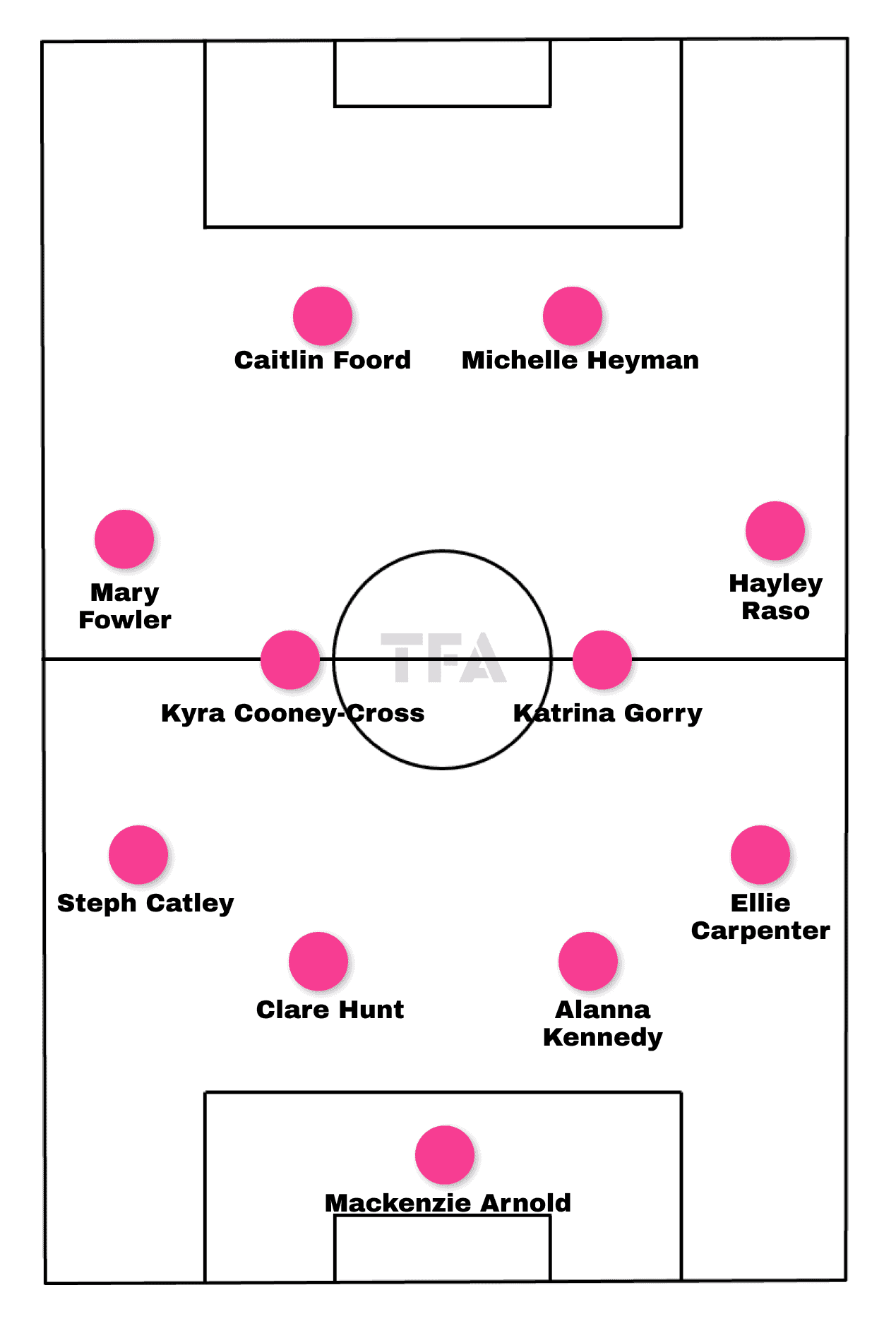
Australia hasn’t had too much game time leading up to Paris but has contested a few friendlies against Mexico and China since confirming qualification.
Gustavsson’s side has been known to make in-game tweaks tactically but you would expect them to utilise the 4-4-2 formation this summer.
Australia was the first nation to announce their 18-woman squad for the games, which includes many recognisable figures currently plying their trade in the Women’s Super League.
One such player is West Ham’s experienced goalkeeper Mackenzie Arnold, who you would expect to get the nod in goal ahead of Liverpool’s Teagan Micah.
Arnold is one of a handful of players in this squad on the verge of becoming three-time Olympians.
Others include captain and Arsenal defender Steph Catley, who is expected to start at left-back, and Lyon’s Ellie Carpenter, the first choice at right-back.
There is a debate as to who will start in central defence, given the injury issues in this campaign.
Still, we anticipate that Manchester City’s Alanna Kennedy and PSG’s Clare Hunt will be the preferred pairing.
The most capped player in this squad, 35-year-old Clare Polkinghorne, is expected to provide cover for this position.
Arsenal’s Kyra Cooney-Cross and West Ham’s Katrina Gorry are likely to make the starting XI in central midfield.
This is despite Cooney-Cross not being a regular starter in North London this season; prior to the squad announcement, there had been question marks concerning Gorry’s fitness due to a prior injury.
The midfield lineup is completed by Real Madrid’s Hayley Raso and Manchester City’s Mary Fowler.
However, it could be conceivable that Fowler will interchange positioning with Arsenal forward Caitlin Foord, who is expected to lead the line alongside the Aussie’s only out-and-out striker, Michelle Heyman.
If one word epitomises this Australia squad, though, it is versatility.
In addition to Fowler and Foord’s ability to alternate positions between the central and wide areas, Kaitlyn Torpey is expected to provide cover both in the midfield and at right full-back; vice-captain Emily van Egmond is an alternative option either upfront or in midfield.
Moreover, Gustavsson has experimented with Catley in central defence rather than left-back, and likely substitute Tameka Yallop has taken up numerous different positions.
Such flexibility ensures the Matildas could be a tactical headache for opponents.
We have already discussed the experienced personnel in this squad.
As shown in the plot below, nearly half the Matildas are at least 30 years old.
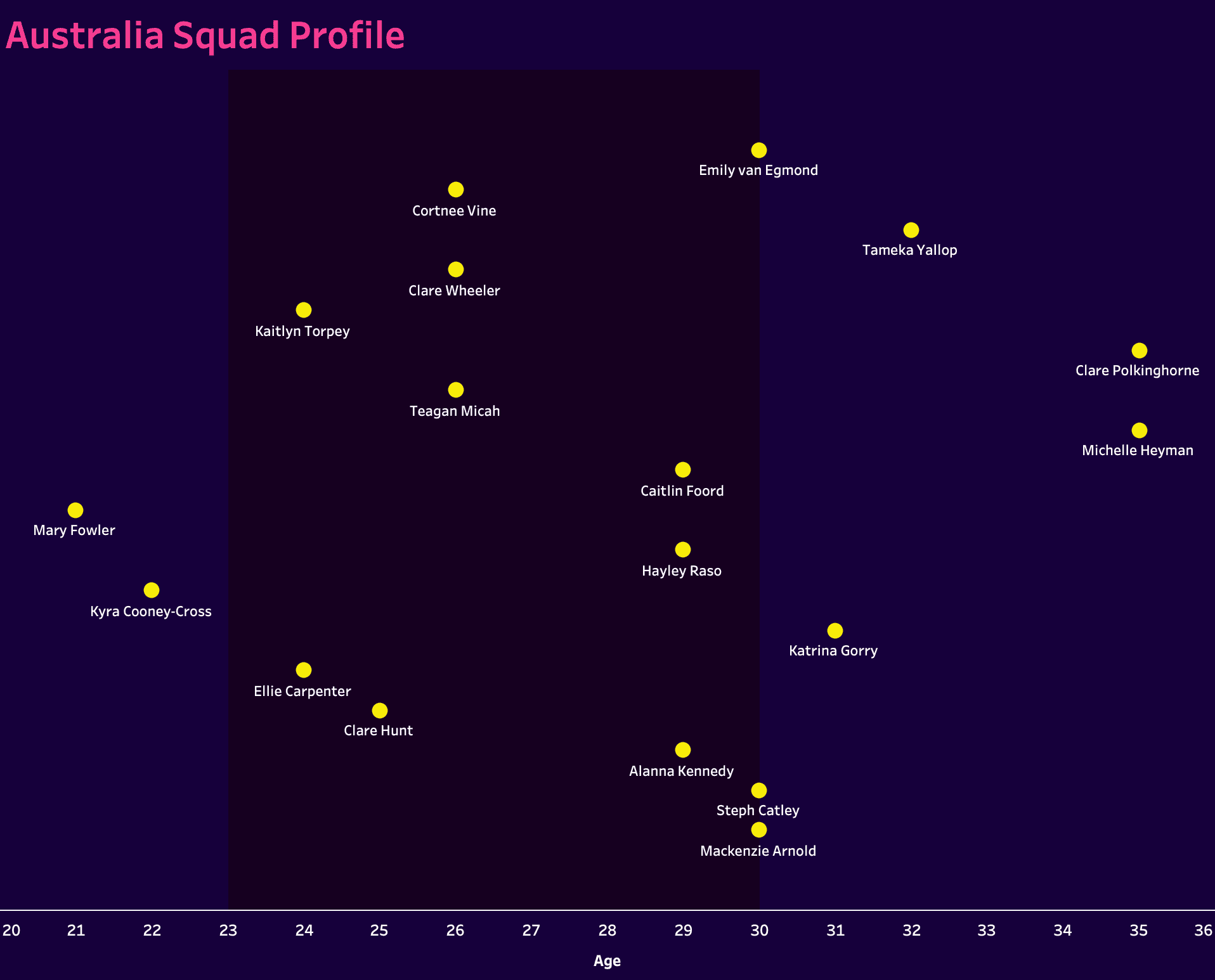
Whilst this does point to a slightly ageing side, young players such as Cooney-Cross and Fowler are still breaking through the Aussie ranks, and they already have tournament football experience.
Australia, therefore, has the makings of a fairly balanced squad.
Attacking phase
Gustavsson encourages his side to be brave in possession and look to play out from tight positions.
The Aussies averaged 73% possession throughout their qualifying matches, which highlights the level of dominance they were able to assert.
However, don’t expect the Matildas to be able to sustain such high percentages of play at the Olympics due to the higher level of opposition they will face—notably two teams ranked in the top five in the world.
This is a stark contrast to the qualifiers, where their average opposition ranking was 48th in the world.
Nevertheless, Australia has produced some encouraging displays of late against the likes of China and Mexico, the former being ranked in the top 20 in the world.
In the build-up to the games, Australia has showcased their offensive strategy looking to hem the opposition within their own half.
The Matildas use their versatility in personnel to their advantage, pushing their full-backs high up and dropping a central midfielder, typically Cooney-Cross to form a back three.
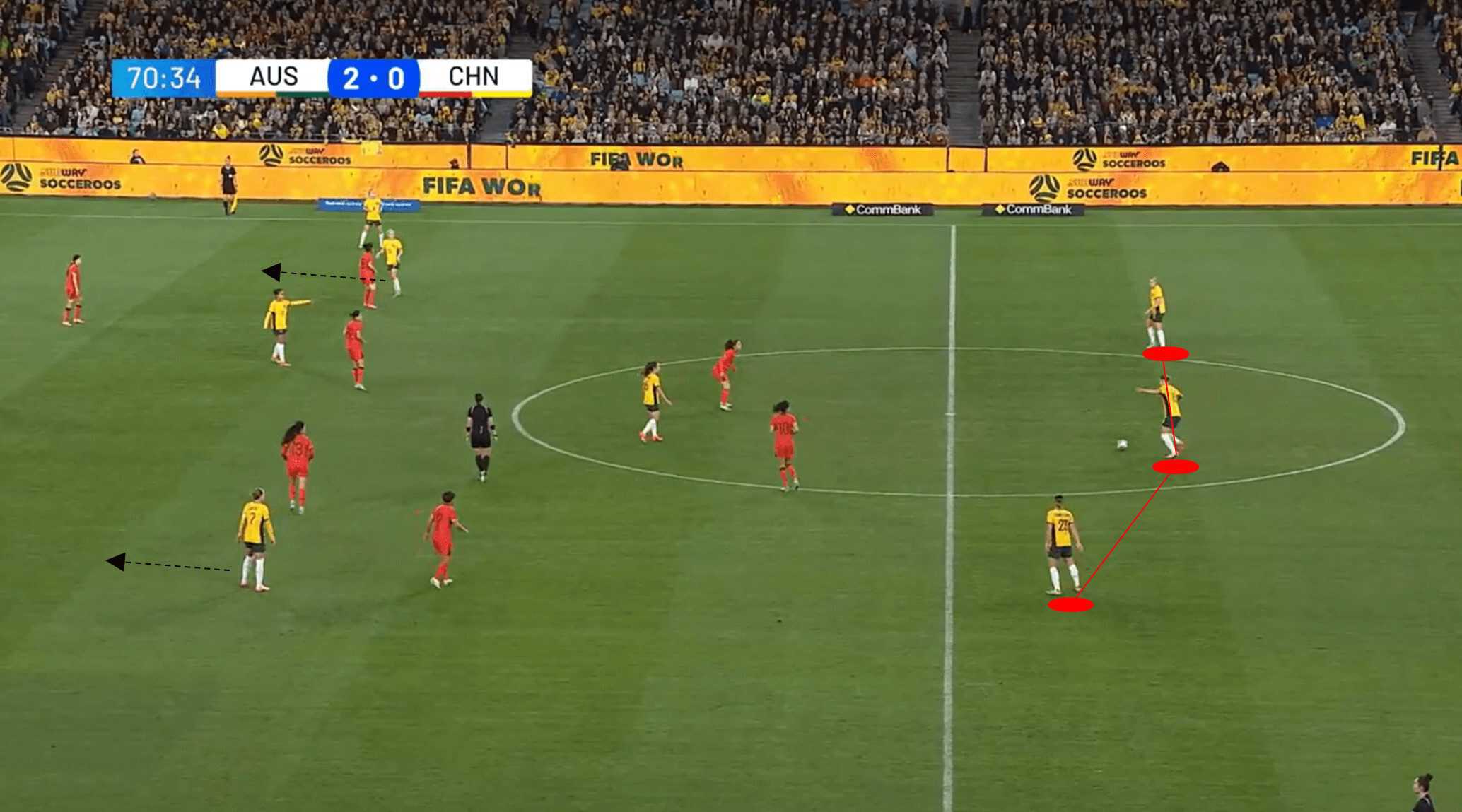
Alternatively, Catley will sit deeper to form a back three with Kennedy and Hunt, allowing Carpenter on the right to be more offensive.
Carpenter’s positioning, though, is not solely restricted to the right-hand channel and providing overlapping runs.
It also extends within the central spaces to create midfield overloads and within the half-spaces, rotating positioning with Raso on the right wing.
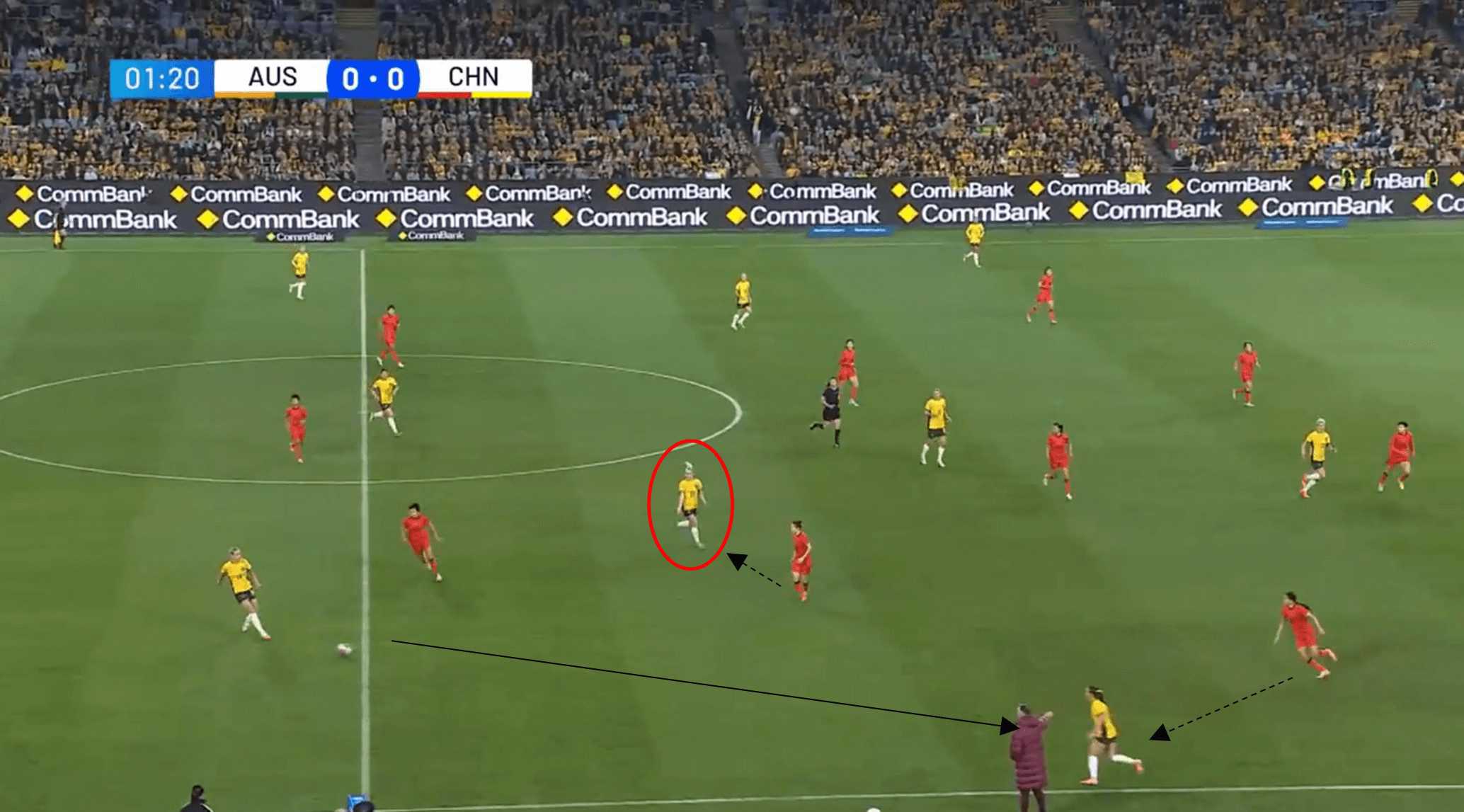
The above still shows Carpenter taking up a central midfield position, which has drawn the opposition in.
This, in turn, has created space on the right for Raso to occupy and further stretched out the opposition’s backline, which proceeded to close down Raso.
When Carpenter can get in possession in the half-spaces she is a big attacking threat for Australia.
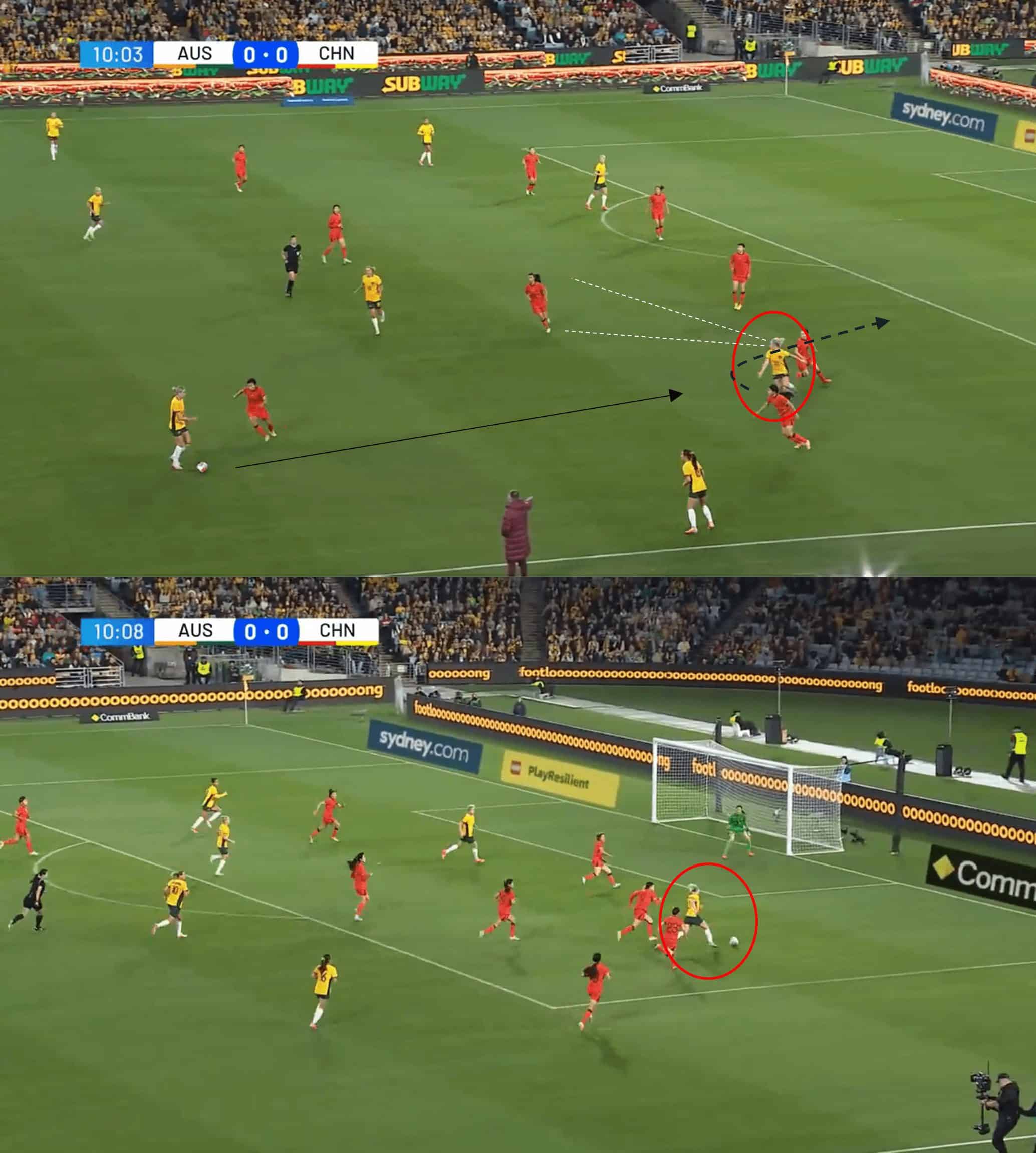
Carpenter does a pre-check and, upon receiving the pass, takes advantage of the opening by quickly turning to drive forward at pace to provide a dangerous cross into the area.
Australia’s quick change in play can be expected at these games as they are often patient in their build-up and look to capitalise given the right opportunity.
Expect the Matildas to drill crosses into the area this summer as they look to pile their strikers and midfielders forward, using their player overloads to their advantage in the attacking phase.
With the likes of Fowler and Foord, Australia has some quality up top and players who are capable of producing moments of magic, but a critique of this squad is that they do not often produce the clear-cut chances that align with their possessional dominance.
The Matildas need to be more clinical, having only seen 39% of their shots on target during Olympic qualifying.
Against better opposition, it will be even more critical for Gustavsson’s side to make the most of their chances.
Defensive phase
Australia’s offensive strategy transcends without possession, as they opt for a high press, while the opposition looks to build up play.
The Aussies will often stick to their 4-4-2 shape in the defensive phase but will commit midfielders higher up toward the front two to assist in the press.
In the recent encounter against China, it is shown here how they looked to harry their opponents in and around the penalty area, giving little time on the ball.
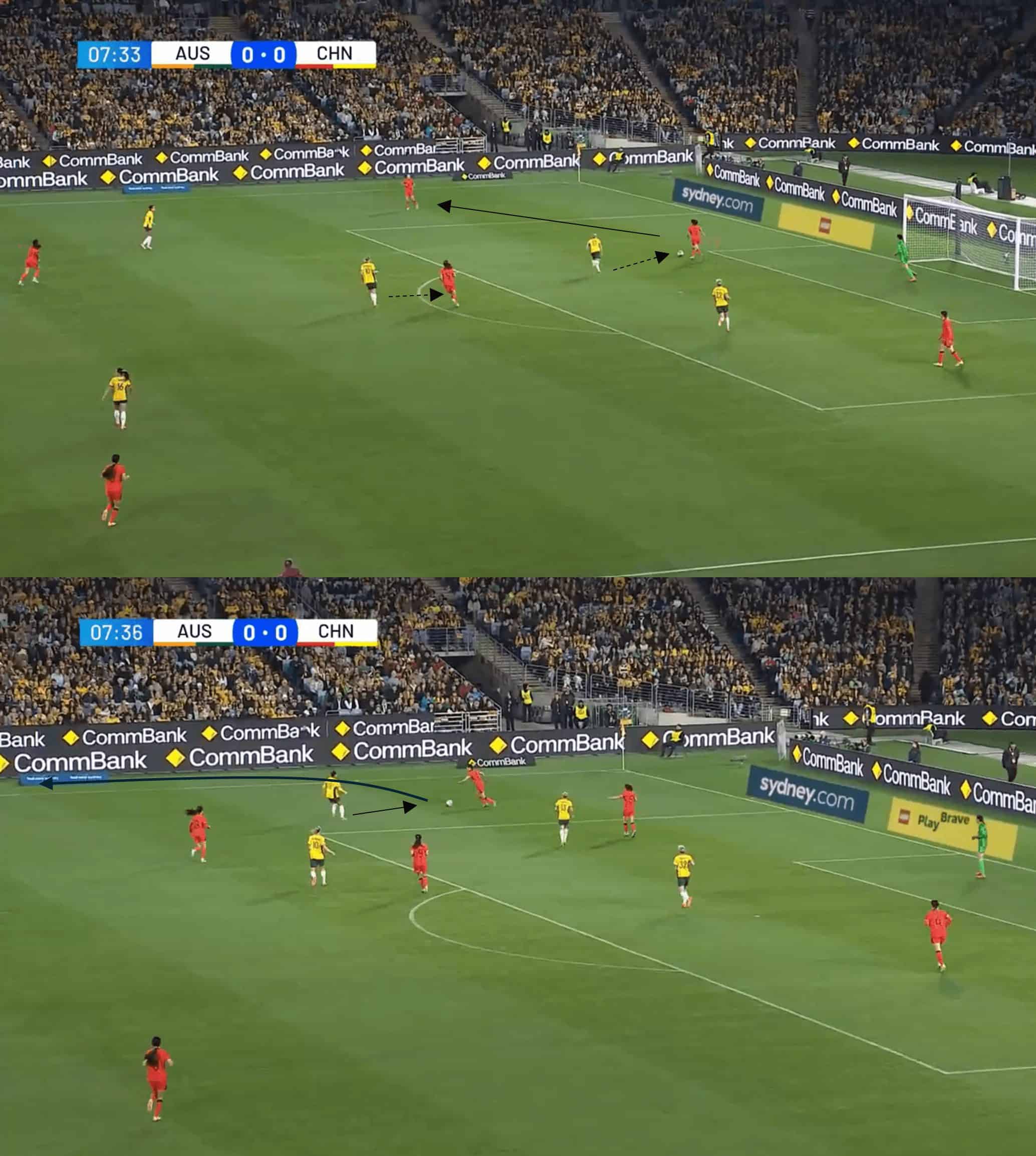
The two forwards instigate the press; van Egmond also follows suit, wasting no time man-marking the central midfield passing option.
The off-the-ball movements ensure the pass is made to the right, and Fowler closes down, further limiting China’s passing options.
China subsequently opt for the long ball and are unable to stamp down any possessional authority.
Australia’s tactics to assert dominance out of possession worked well during qualifying, as they did not concede a single goal en route to Paris.
The graphic below shows the Matildas’ exceptionally high line from the qualifying stages.
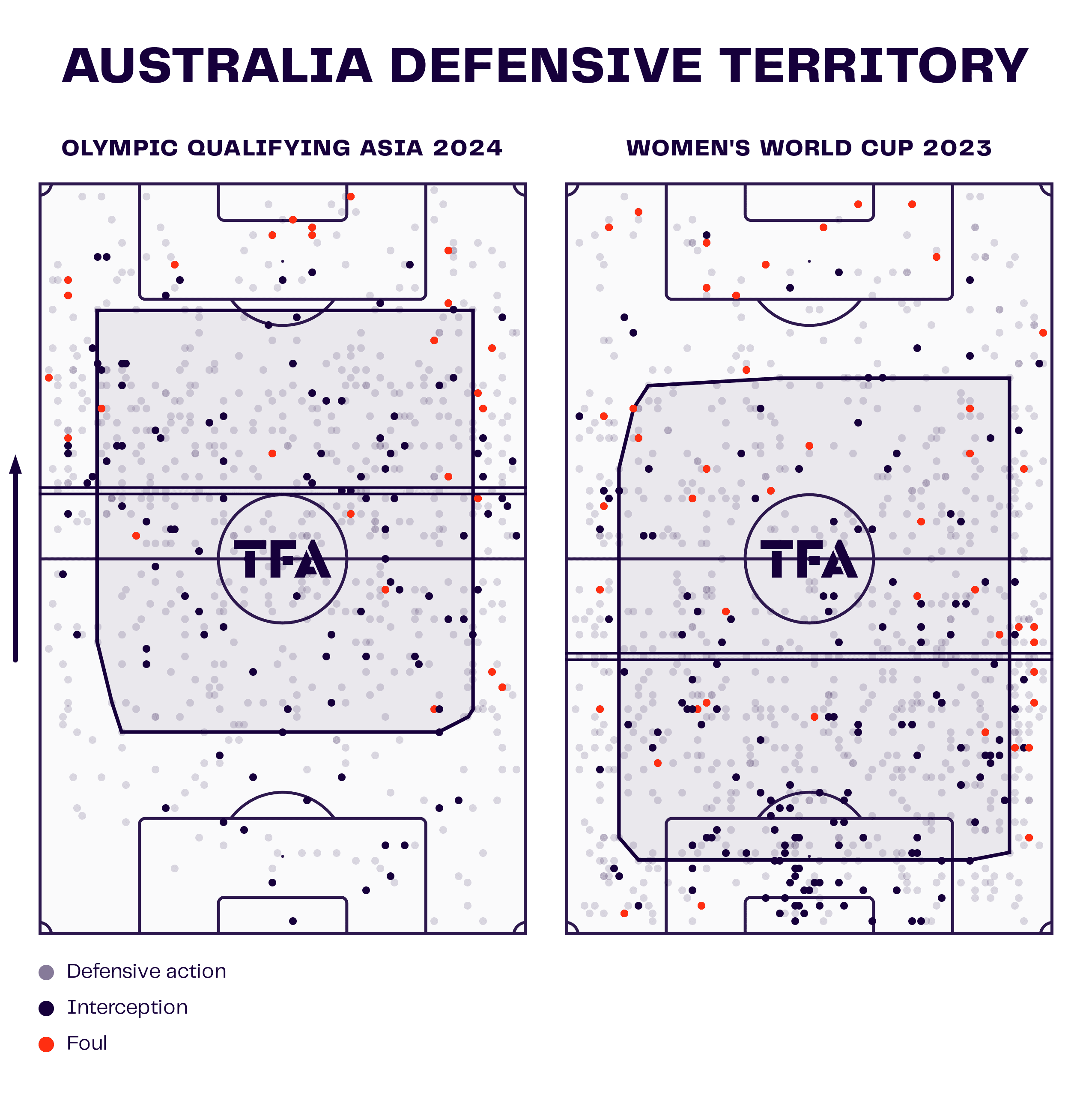
It is noticeable that, in comparison, Australia kept a much deeper defensive line at the last World Cup.
Whilst Gustavsson’s side has been much more adventurous lately, this is likely, in part, due to the level of the opposition during Olympic qualifying.
Much like the decrease in average possession is anticipated from the Aussies in Paris, expect for them to also play deeper than the recent norm, given the quality of their group opponents.
Australia’s press is likely to be of less intensity when facing higher-quality opponents if you consider that in the two qualifying matches against Uzbekistan, Australia averaged a PPDA value of five, compared to 15.76 in a recent friendly against Canada, a side ranked in the worlds top 10.
If the opposition can bypass the Australia pass, there could be space to exploit in their backline; the high defensive line could leave Australia vulnerable to long balls, looking to test the pace of the two centre-backs.
Australia will look to stick to their pressing principles in Paris, but realistically, you would expect the intensity to be dialled down.
When the opposition can build out from their own third, Carpenter is expected to be of equal importance as she is to Australia’s attacking play.
The right-back is likely to be given the most license out of the back four to be more aggressive in closing down the opposition and instigating putting Australia back on the front foot.
Transitions
As Australia has dominated possession overall of late, they are not a side that has become particularly synonymous with counterattacking football.
That being said, there is pace in this forward line and from the options down the channels.
The pace in the Australia lineup extends beyond the predicted starting XI, though, if you consider the likes of Cortnee Vine, who could be a useful attacking option from the bench this summer as her speed could be a positive outlet, particularly if the Matildas have a lead to protect.
However, due to Australia’s willingness to opt for overloads in the attacking phases, it could be vulnerable in defensive transitions.
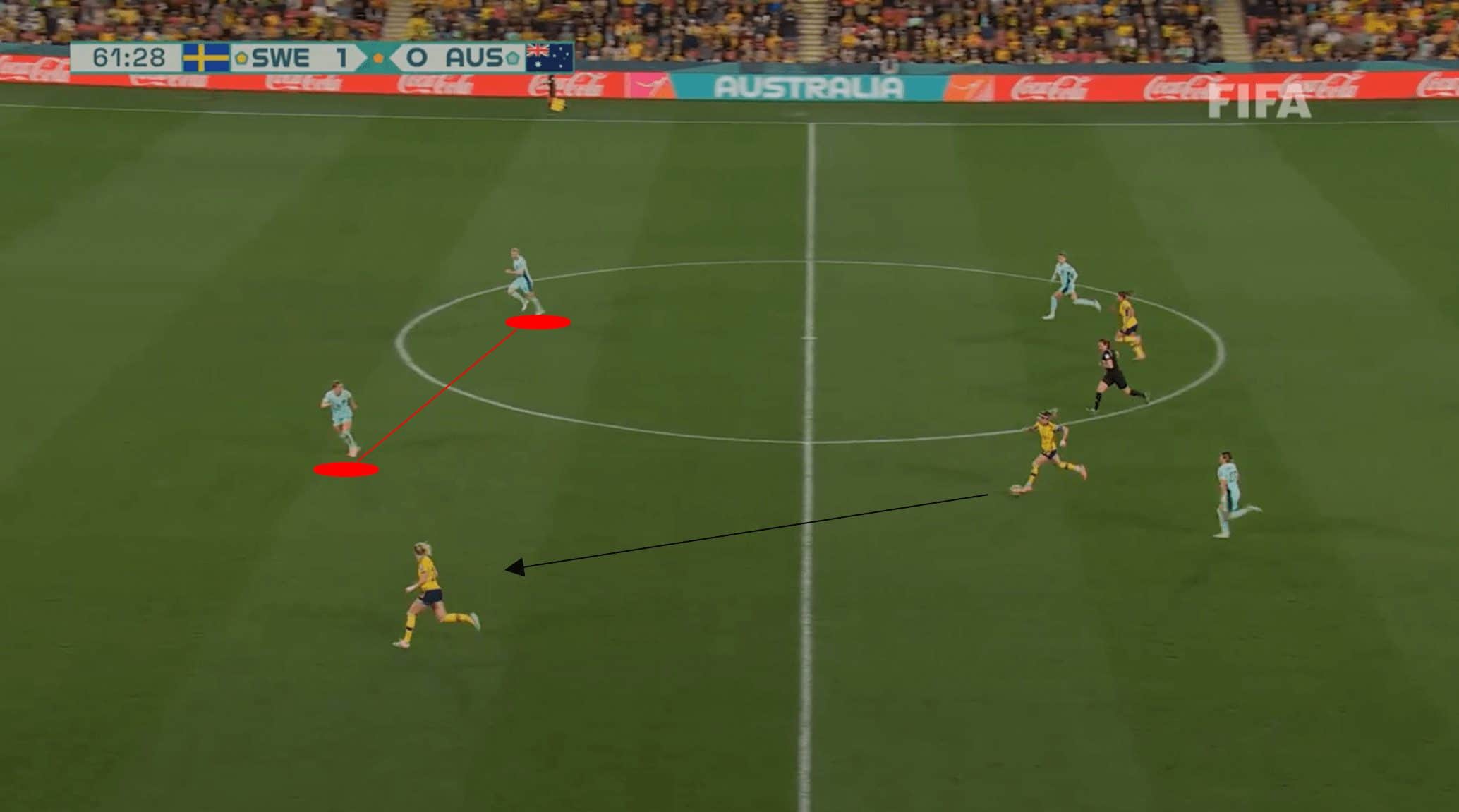
You only have to go back to the last World Cup, where Sweden exploited Australia’s exposed backline, scoring on the break.
As Catley and Carpenter are expected to be on the offensive, this leaves potential space on the channels for opponents to manipulate and stretch the centre-back pairing, which was the case above.
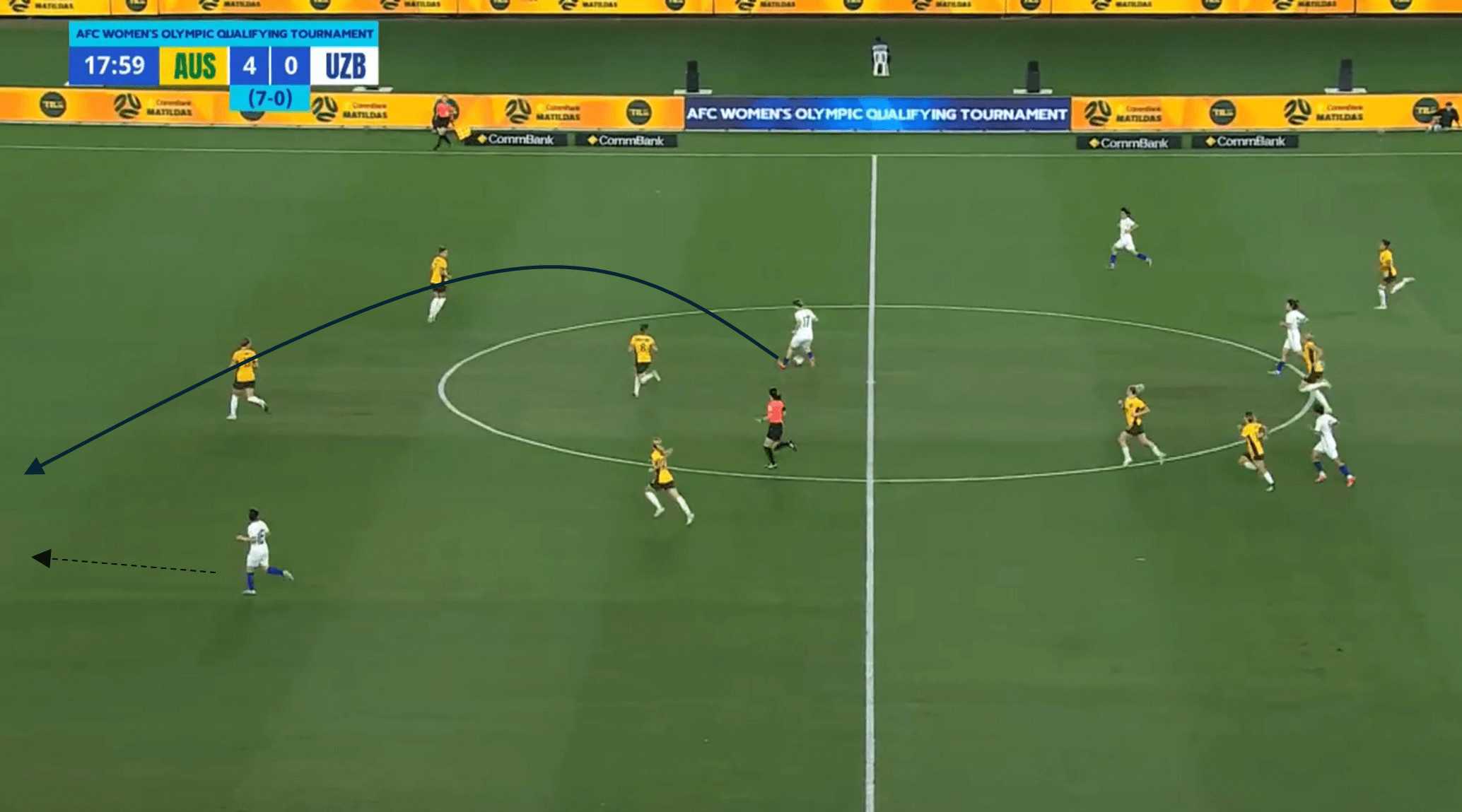
This was a similar scenario against Uzbekistan in qualifying, as space opened up on the attacking left-hand side.
Australia was fortunate, though, in that the forward pass on the counter was poorly placed, but they may not have been so fortuitous against stronger opposition such as the USA or Germany.
Whilst there are positives to this Australia squad, given the versatility of their players, astute tactical positioning will be critical for the Matildas this summer as a weakness in their defensive transitions is their somewhat chaotic approach to covering their tracks.
Forwards
With Kerr sustaining an injury earlier in the campaign, the door opened up to Canberra United’s veteran forward, Heyman, to stake a place in the Aussie fold.
It is an opportunity she has grasped, netting five times during Olympic qualifying despite a 2.5 expected goal value.
All of the goals dispatched by Heyman have been inside the penalty area, notably in and around the six-yard box.
The 35-year-old will look to showcase her poaching ability in front of goal, anticipating incoming crosses from the flanks.
In contrast to Heyman, Foord is likely to operate across the front line and, as we’ve previously alluded to, will alternate positioning with Fowler on the left wing.
Despite injury struggles this season, Foord will be looked upon as an experienced player of this squad and will look to add a clinical touch.
From the bench, Australia is likely to opt for Vine to change up the pace of their attacking outlet; van Egmond will likely be an assured figure they could rely on.
Midfielders
Raso may not have been a consistent starter in her debut season at Real Madrid, but she has become an important figure within this Australia fold, chipping in with goals and being a prominent figure on the right-hand side.
In comparison to her positional peers from the women’s top nine divisions, Raso ranked in the 99th percentile for tackles per 90 this last calendar year.
Her defensive solidarity will be important to Gustavsson’s side, given Carpenter’s ever-changing positioning.
A concern of this midfield setup, though, is the lack of playing time domestically.
Raso, Fowler, and Cooney-Cross have not been regular starters at their respective clubs; Gorry suffered an ankle injury this campaign and was a doubt to make this squad.
However, it has been noted that despite the lack of consistent game time, this midfield has performed to a high level when in the Aussie gold, as they have often been given the opportunity to express themselves.
Defenders
Given the nature of Australia’s play throughout qualifying, it is important that the defensive personnel are comfortable in possession.
In both Kennedy and Hunt, the Aussies have two centre-backs who are comfortable at dictating play and are known for advancing play toward the opposition half.
However, neither can afford to be complacent when in possession.
This is especially true given that Carpenter and Catley are likely to push higher up.
However, Catley can also provide cover in the centre of defence, and such versatility is likely to see the Australia backline transition from a back four to a back three throughout the tournament.
Including Arnold in goal, the defensive line comprises some of this squad’s more experienced players, and they will be crucial figures in ensuring Australia stays level-headed.
Carpenter, particularly, will need to be disciplined in defensive positioning and pick the moments to press intensely and wisely.
Key Player
There are some experienced, quality players in this Australia squad, and we have already touched upon the tactical importance of players such as Carpenter.
However, one player who we believe will be key to Australia’s medal hopes in Paris is midfielder Cooney-Cross.
Cooney-Cross will be the key pivot in the midfield four, who will be hugely influential to Australia both in and out of possession.
The 22-year-old will be expected to provide defensive cover for the advanced full-backs, so will need to be disciplined in positional play.
The Arsenal midfielder’s quality in possession will be key in driving the Matildas forward, as she is an assured figure when dribbling.
Cooney-Cross ranks just outside the top 10 for the percentage of successful take-ons in this season’s WSL.
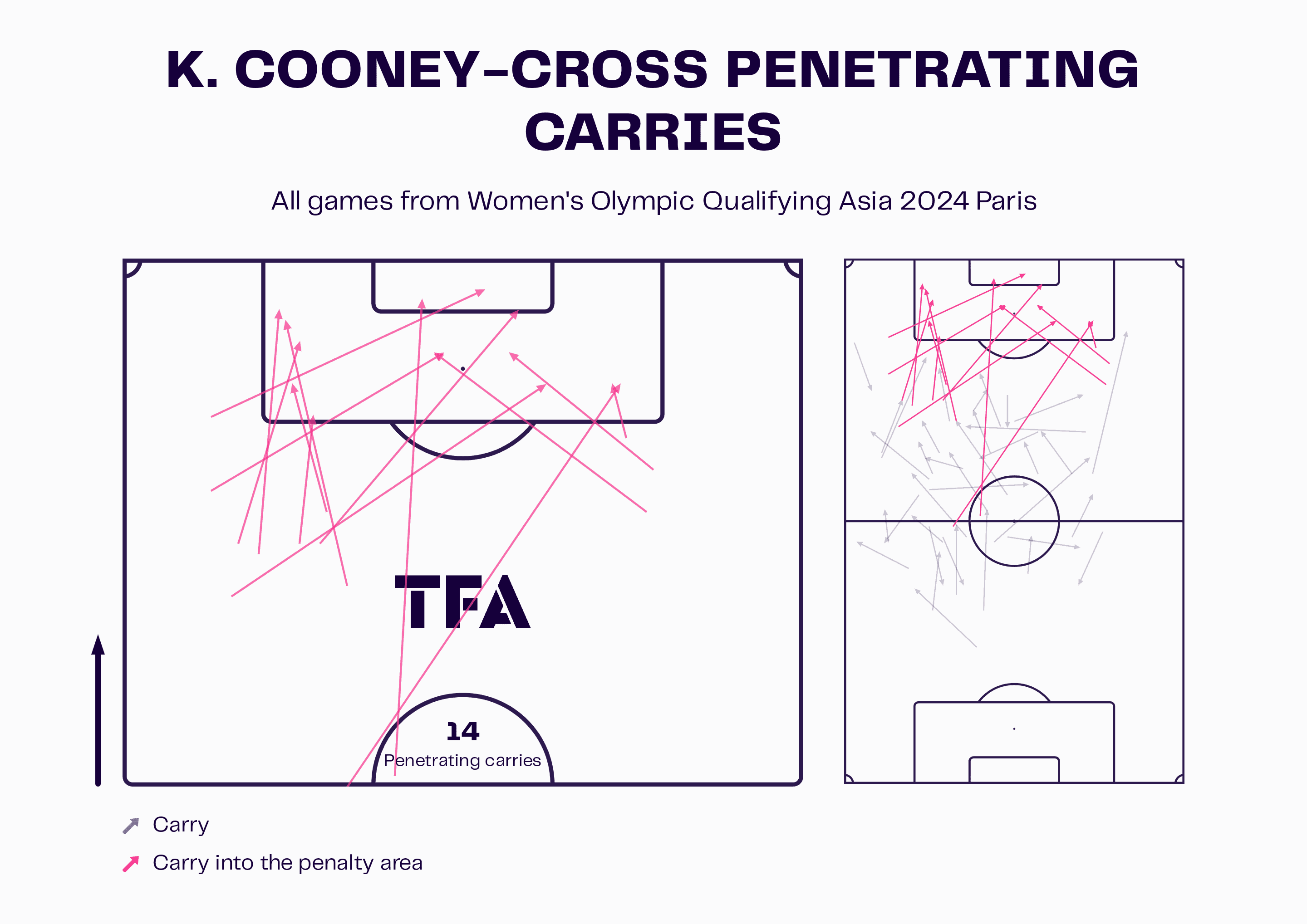
Notably, from the above graphic, Cooney-Cross will look to drive into the box to create openings for her team, which could be useful if she is trying to break down a low block.
A further strength of Cooney-Cross’ is her passing, which is exemplified by the scatter plot.
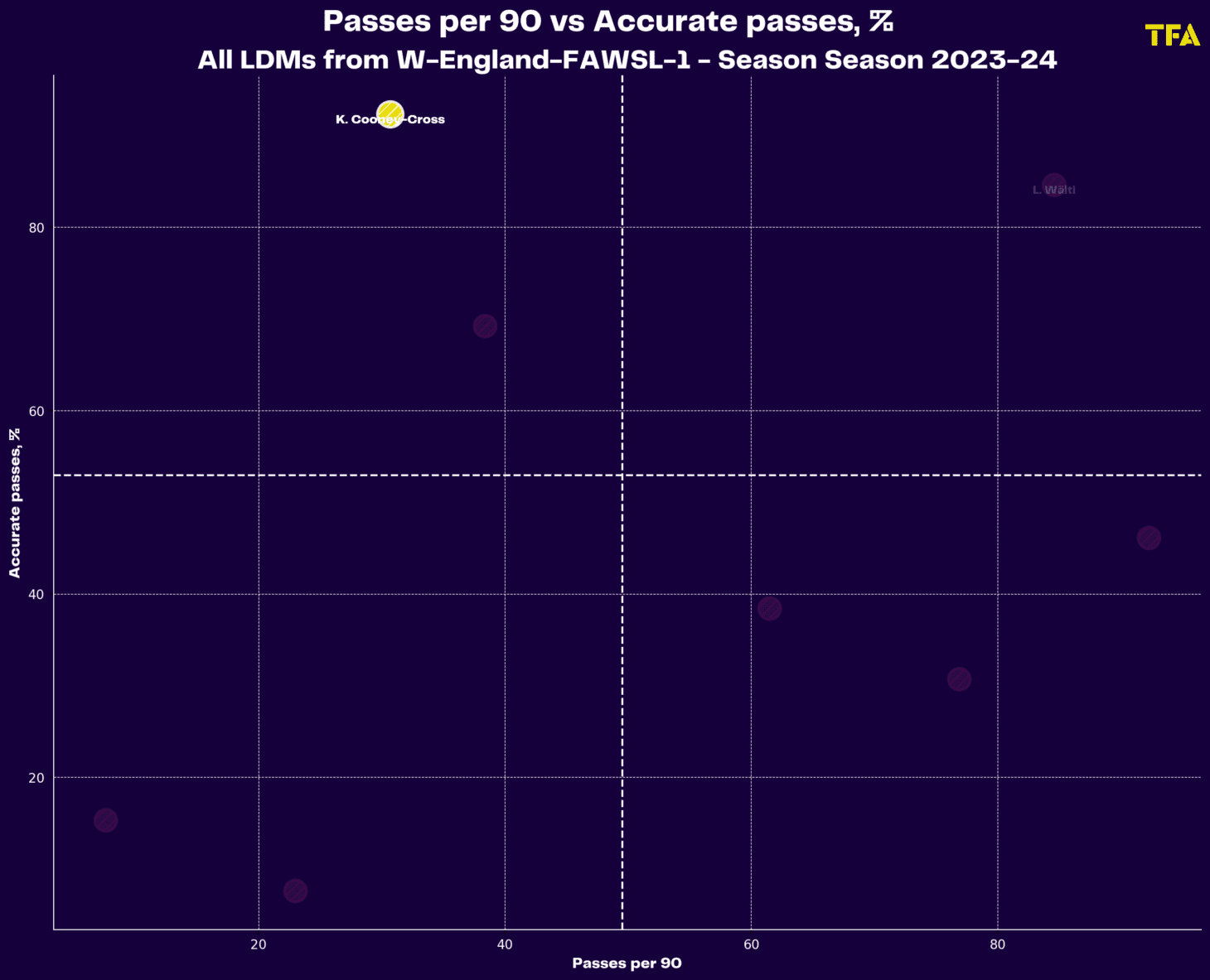
Although the 22-year-old doesn’t rank highly for passes per 90, compared to her positional peers in the WSL this season, Cooney-Cross ranks highly for her passing accuracy.
This points to a player capable of dictating the narrative of play as well as a crucial figure in retaining possession – something Australia will need when contending with the heavyweights of their Olympic group.
Tournament prediction
Undoubtedly, it will be a tough task for Australia to qualify from Group B, with the USA and Germany considered favourites.
However, no football tournament is complete without a shock or two.
The Matildas certainly have it within them to cause an upset and progress to the knockout stages in Paris.
If they can do so, it may prove a tall order to bring Gold back to the Gold Coast, but there could be every chance of going one step further from Tokyo and finding a place on the podium.

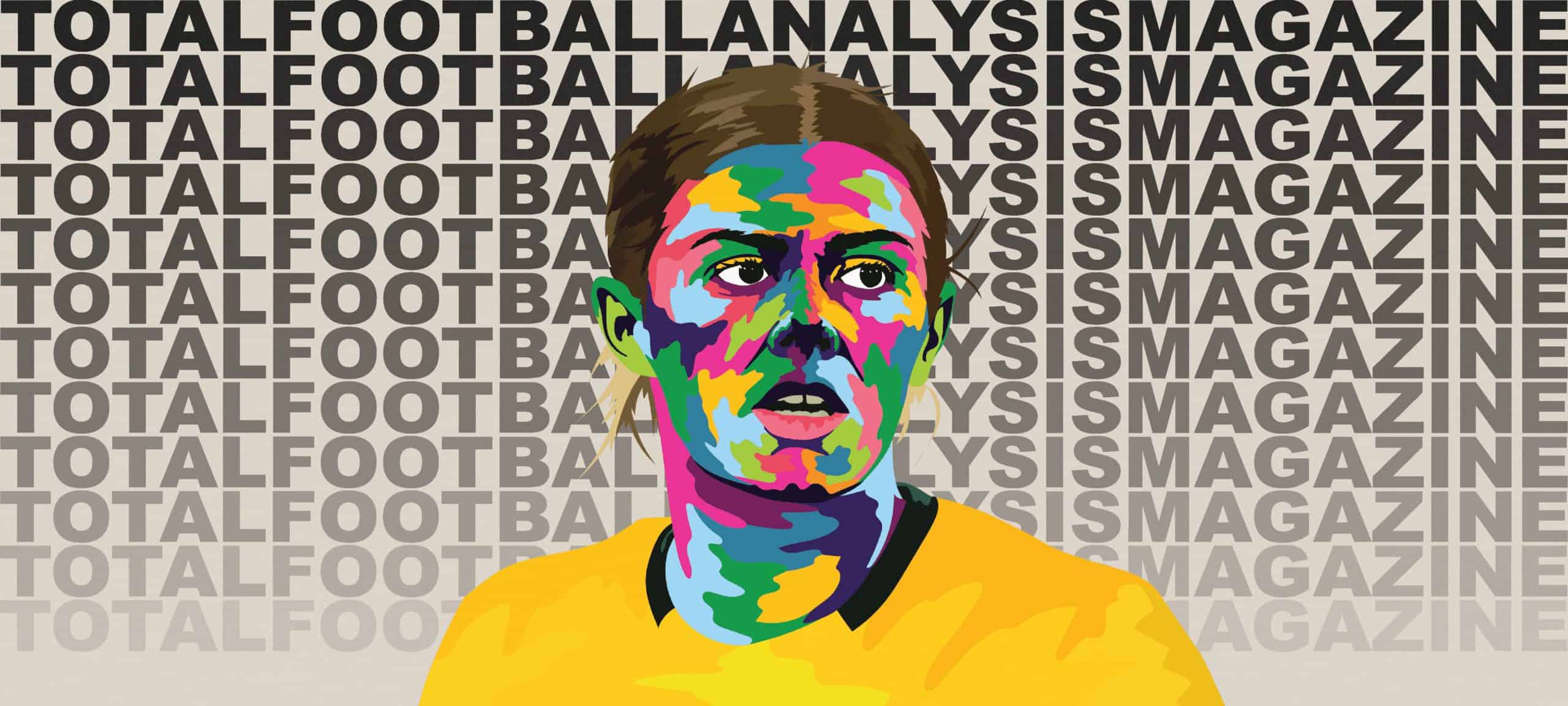




Comments